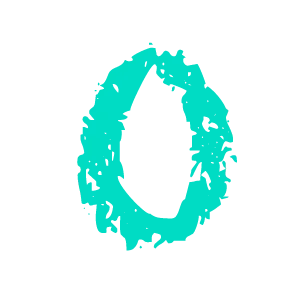
How Data Analytics Can Improve Facility Usage & Scheduling
Predicting peak hours, optimizing bookings, and fueling smarter marketing & scheduling.
Whether you run a bustling city-run recreation centre or a boutique private gym, the challenge is universal: how do you make every square foot of your facility work harder and smarter? The answer is data. More specifically, analytics that connect your operations, your bookings, and your marketing into one intelligent system.
In an era where budgets are tight and demands are high, understanding usage trends isn’t just helpful—it’s essential for growth, retention, and maximizing ROI. Here’s how decision-makers across community and private fitness sectors can tap into their data to predict peak hours, refine program offerings, and launch more effective, well-timed marketing campaigns.
Understanding Usage Patterns: From Gut Feelings to Evidence-Based Scheduling
Traditionally, scheduling decisions at community centres and gyms were made using a mix of experience, guesswork, and a little trial and error. Today, platforms like HighLevel give operators a full-picture view of when members are actually using the space, which programs are consistently full, and where waitlists are forming.
By tracking trends over weeks or seasons, leaders can:
Identify true peak hours and adjust staffing accordingly
Restructure underutilized time blocks for higher-demand activities
Spot drop-off patterns before retention becomes a problem
Plan seasonal offerings based on real usage, not assumptions
Stat spotlight: According to ParticipACTION, only 16% of Canadian adults meet national physical activity guidelines. But targeted programs that align with local demand show higher engagement and attendance. [Source: ParticipACTION Report Card, 2023]
Comparing Community Centres vs. Private Gyms
Whether you’re managing a city-run rec centre juggling seasonal programs or a private gym running year-round classes, the core challenge is the same: how do you schedule smarter and fill more spots without burning out staff or overbooking your space?
Both models benefit from:
Demand-driven scheduling
Waitlist tracking and alerts
Class and court optimization
Automated follow-up for missed sessions
What differs is scale and flexibility: community centres often have more public accountability and structured programming windows, while private gyms can often move faster on trend-based classes (like pickleball or hot yoga) and niche offerings.
Predicting Peak Hours (and Program Fatigue)
Analytics can show more than what’s hot—they can also reveal when something is cooling off. If a once-popular spin class sees declining attendance, or your pickleball court is booked solid Monday-Wednesday but wide-open Thursday-Friday, it’s time to adjust.
With HighLevel, operators can:
Set alerts for underperforming classes
Track booking decay over time
Compare trends year-over-year
Send targeted re-engagement campaigns
This kind of foresight allows you to refresh your schedule before numbers decline further, or even A/B test new class times based on real interest.
From Engagement to Enrollment: Marketing as a Scheduling Tool
Marketing data becomes far more powerful when it's not just used to track clicks, but to inform operational decisions.
For example, if a Meta campaign generates interest in an evening bootcamp from a new audience segment, and that interest turns into actual bookings, managers can adjust class times or open new sessions to meet that demand. HighLevel brings these insights together in one platform — allowing gym owners or community leaders to not only market smarter, but schedule with intention.
You’re not just selling spots. You’re using engagement trends to understand which programs resonate, what times work best, and which demographics are showing up.
Automations That Keep Schedules Full
HighLevel also lets you automate the follow-up process:
Send reminders to low-attendance members
Promote under-booked classes in real-time
Trigger campaigns to fill specific time slots (e.g., "Thursday morning yoga has 3 spots left!")
Personalize messaging based on attendance history or past interests
This is where automation meets intuition — using data to replicate what a great front-desk manager might do, but at scale.
The ROI of Better Scheduling
Every empty spot in a class or unbooked hour in a gym is lost revenue. But by integrating your data and streamlining your operations, you can:
Increase program profitability
Reduce staff burnout from last-minute changes
Improve participant retention with consistent, data-backed offerings
Create a better member experience by always having the right programs at the right times
Final Thoughts: Lead Smarter, Not Harder
Facility managers and business owners no longer need to rely on guesswork. With the right analytics and automation platform, you can predict, plan, and perform better — serving your community while maximizing your resources.
The future of facility scheduling isn’t reactive. It’s strategic, data-informed, and built to scale. And it starts with understanding the story your data is already telling you.
Ready to turn insights into action? Let’s talk about how HighLevel’s analytics and automations can help you build better schedules, boost attendance, and grow smarter. Book a FREE call with us to learn more!



